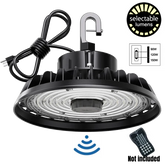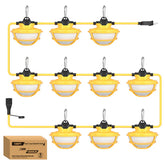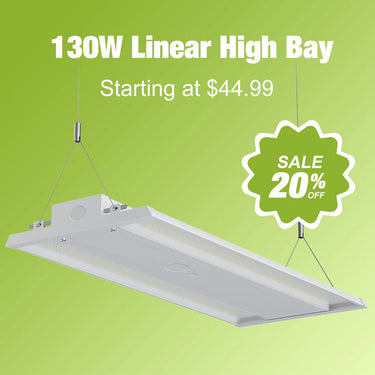DIY Home Lighting: Brighten Up Smartly and Slash Your Electric Bill
by
NioJaydon
31 Jul 2025
Lighting is the ultimate home upgrade—easy, affordable, and transformative. It’s both functional and a style tool, but let’s be real: lighting design can get complicated. Even public spaces hire pros for it, and most interior designers aren’t up to the task.
But that doesn’t mean you need an expert to get your home’s lights right. Every time I move, the first thing I do—before unpacking, before painting—is swap out all the lights and bulbs. I’ve spent years figuring out how to make a home glow without blowing the budget, and I’m here to share the hacks.
No jargon here—no “lumens” or “light output” lectures. Instead, I’ll show you how to trust your own eyes to tell if your space is well-lit. Then, I’ll walk you through simple steps to upgrade your lighting game.
One thing I’ve learned the hard way: lighting is super personal. It depends on where you grew up, how your eyes work, even your mood. So stop taking other people’s word for it—you’ve got to feel it out for yourself.
Take our carefully designed Beijing model home. Some people think it’s perfect; others say it’s too dark. And that’s okay! Taste varies. Same with “white” light: some swear 5500K is true white, others argue 6500K. You’ll only know what clicks when you try it.
Ditch the “One Light to Rule Them All” Mentality
If you’ve followed our content, you know we’re not fans of relying on a single ceiling light to light up a room. It’s not that ceiling lights are bad—they’re just not meant to do all the work. This is especially important if you’re decorating a new space—nip that old habit in the bud.
I was at IKEA once, and I heard a couple arguing over a cute pendant light. “It’s pretty, but will it light the whole living room?” the guy asked. “Probably not,” his partner sighed. I wanted to chime in: That’s not what it’s for!
A room isn’t just one thing. You watch TV here, read here, chat with friends here—and each of those things needs a different kind of light. Ever tried reading under just a ceiling light? It’s dim, and the angle is all wrong—you end up hunching to keep your shadow off the page. Annoying, right?
Or how about digging through a cabinet? A ceiling light won’t reach inside—instead, it casts a big shadow right where you’re looking. Frustrating.
Watching TV and reading require totally different lighting. A single ceiling light either washes out the screen with glare or leaves your book in the dark. Cranking up its brightness just wastes energy on corners and hallways that don’t need it, while the spots that do need light still get shortchanged. Even offices use a grid of lights—there’s a reason for that.
Here’s a fun fact: In Taiwan, hallways and bathrooms only need 75 lux (a measure of light intensity), offices need at least 300 lux, and design studios start at 750 lux. You don’t need to memorize that—just know this: Reading needs 4 times more light than just walking around. Trying to cover that gap with one light? It’s not just impossible—it’s a huge waste of electricity.
So, the first rule: Great lighting needs multiple sources. And multiple switches.
More Lights = More Options (Not More Hassle)
Having lots of lights and switches isn’t a pain—it’s how you adapt to different moments.
When I work, I turn off every light but my desk lamp. It’s like hitting a “focus mode” button. For movie nights with the projector, I leave one dim light far from the screen—no more squinting.
The problem isn’t too many lights—it’s useless ones. Remember those 2000s blue LED strips or wine rack spotlights? They’re pretty, but when was the last time you turned them on?
Good lighting is like a tailored suit: Worth it even if you wear it once a year. Bad lighting is that cheap shirt you bought on sale that never fits—clutter, plain and simple.
And with smart lighting these days? Multiple lights are easier than ever. You can control them with your phone or voice. If you’re thinking, “But I’m too lazy to mess with all that,” I get it—but that’s like ignoring a money-saving trick and then complaining about your bills.
At the end of the day, upgrading your lighting is your call. We’re just here to show you it’s doable.
Step 1: Start with Ambient Lighting (Your “Base Layer”)
Ambient lighting is like the foundation of a good outfit—subtle, not showy.
Keep it soft. Too bright, and it looks harsh and wastes energy. Today’s LEDs are so efficient, you can light your whole house for less than an old incandescent bulb used to cost. It’s not about how many watts you use—it’s about using them where they matter.
Aim for “just enough”: You can walk around without tripping, find stuff in drawers, and see what you’re doing. If you’re a “bright home” person, crank it up a notch—but you won’t need to.
A living room under 200 square feet? The old way might call for a 100W LED ceiling light. With this method? 30W is plenty. My 180-square-foot space uses two 7W spotlights, and no one’s ever said, “It’s too dark.” I actually like mine a little moody—adjust to your vibe.
Pro tip: Shiny surfaces like tile or marble bounce light around, so you get more brightness for free.
Ever seen a gorgeous light fixture and thought, “It’s not bright enough”? That’s because it’s meant to be ambient, not the only light. Pair it with other sources, and it’ll shine.
Ambient lighting isn’t just ceiling lights, by the way. Try chandeliers, recessed cove lights, or even small flush mounts. We’re not anti-main lights—we’re anti-using them as your only light.
Step 2: Add Task Lighting (Brighten What Matters)
Moved in and realized your kitchen’s too dark? No stress. Ambient light handles the basics—task lighting fixes the problem spots.
Pay attention to where you struggle: Is it hard to see while chopping veggies? Can you barely read your book on the couch? Do you squint when doing your makeup?
I’m always adding lights. My kitchen cabinets were too dark, so I stuck a T5 tube under them. My full-length mirror? Added LED strips, and suddenly I can see my outfit like I’m in a dressing room. When I added a kitchen island, I swapped the old ceiling light for a spotlight—bright, focused, perfect.
No outlet nearby? Grab a power strip. Table and floor lamps are portable—way more flexible than a stuck-in-one-place ceiling light.
Here’s the magic: If your ambient light is dim, task lights make up for it. A 100W ceiling light might not cut it for reading, but a 5W desk lamp? Works like a charm. Mine’s 3W—crazy, right?
Task lighting is simple: Put light where it’s dark. Products like JCLGL’s LED Panel Lights (slim, bright, and easy to tuck into tight spots) are perfect here—they’re designed to focus light exactly where you need it, whether it’s under a cabinet or over a desk.
Step 3: Use Lighting as Decor
Lights can be more than functional—they can be art. Got a dark corner? Stick a cool floor lamp there. An empty side table? Add a stylish table lamp. Go wild—neon signs, vintage bulbs, even string lights—if it makes you happy, it works.
A quick note on glare: A bare bulb isn’t automatically harsh. That trendy Edison bulb? Blinding in a dark room, but totally fine in daylight. Glare happens when a light is way brighter than its surroundings—like scrolling on your phone in the dark. Keep the room’s overall light level up, and glare disappears.
Lamps and Bulbs: Two Different Things
I bought a 1970s vintage floor lamp in Copenhagen, popped in a 3W LED spotlight, and it’s my favorite light in the house. Old lamps work with new bulbs—thanks to standard sizes. Even a 1920s fixture can look amazing with the right bulb.
Unless it’s a built-in LED light, think of the lamp as a pretty case—the bulb is what controls the light. Always pick fixtures with replaceable bulbs—that way, you can experiment.
Common bulb sizes: E27 (big screw, for floor lamps and chandeliers), E14 (small screw, for table lamps), and GU10 (push-in, for spotlights). As long as you don’t exceed the fixture’s wattage limit, you can swap bulbs to change brightness or color. A $5 bulb can totally transform a light—no need to buy a new lamp.
Secret Weapon: Track Lighting
Scared of spotlights? Don’t be. Pick anti-glare bulbs, or angle them at walls, furniture, or the floor. The surface will reflect the light, softening it—no squinting required.
Track lighting is genius: You can move the lights around, aim them where you want, and add more later. If a light is too bright in your eyes? Just tilt it—problem solved.
Can you light your whole house with track lights? Absolutely. Aim them all at walls or the ceiling, and the reflected light will brighten the room—no glare, just soft brightness.
For Families with Kids
Kids love staring at lights, so keep glare in check. Those old heat-lamp bathroom heaters? Pediatricians hate them—they’re way too harsh.
But remember: Glare is about contrast. A bright spotlight is fine if the rest of the room is well-lit—way safer than one super-bright ceiling light that makes kids squint.
Choosing Color Temperature (Warm vs. Cool)
It’s all about what feels right. Experts say 5000K+ is best for work, but it gives me a headache. If you’re not sure, go for 2700–3000K (warm white) and keep it consistent. Mixing warm and cool lights messes with your eyes—your brain can’t decide what “white” is.
Different brands might have slightly different takes on the same temperature—that’s okay. For a perfect match, buy all your bulbs from the same brand and batch.
And remember: Color temperature isn’t the same as brightness. A good warm bulb can be just as bright as a cool one. If you love it, go for it.
Home lighting doesn’t have to be hard. Trust your instincts—if a spot feels dark, add a light. That’s it. With efficient options like JCLGL’s lineup (they make everything from industrial-grade LED High Bay Lights to home-friendly solutions), you’ll light up your space better and cut your bill in half. No pro required.

















